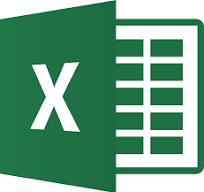SmartApprove vs using Excel (XLS) for approval control.
- Simon Wilcox GM Smart Approve

- Aug 25, 2024
- 2 min read
When it comes to managing workflows, there are two distinct approaches that organisations often consider, each with its own set of advantages and challenges. The first approach focuses on maximising efficiency through streamlining processes and reducing manual intervention. This method emphasises automation, where repetitive tasks are automated to save time and resources. By implementing automation tools and technologies, organisations can ensure that workflows are executed consistently and with minimal errors, leading to increased productivity and cost savings.
SmartApprove
Definition: SmartApprove can automated or semi-automated approval system integrated within a workflow management platform. And uses technology, or rules-based automation to streamline and enhance the approval process.
Advantages:
Automation: Approvals can be triggered automatically based on predefined conditions, reducing manual intervention.
Efficiency: Automates repetitive tasks and accelerates the approval process, minimizing delays and bottlenecks.
Tracking and Audit: Provides real-time tracking, an audit trail, and detailed reporting, which is crucial for compliance and transparency.
Integration: Often integrates seamlessly with other enterprise systems (e.g., ERP, CRM), facilitating data exchange and reducing duplication.
Notifications: Automatically sends notifications and reminders to relevant stakeholders, ensuring timely approvals.
Disadvantages:
Setup Complexity: May require initial configuration and customisation, which can be time-consuming and complex.
Cost: Higher upfront and potential ongoing costs for software licenses, maintenance, or customisation.
Learning Curve: Users may need training to effectively navigate and utilise the system.
Using Excel (XLS) for Approvals
Definition: Using Excel (or other spreadsheet software) for approvals involves manually managing approval workflows within spreadsheets, where data is tracked, and approvals are recorded within the document.
Advantages:
Simplicity: Easy to use for basic tracking and approval processes, especially in small or less complex organisations.
Cost-Effective: No additional software costs; uses existing software that most users are already familiar with.
Customise: Users can create custom formulas, sheets, and processes tailored to specific needs without requiring advanced technical knowledge.
Portability: Excel files can be easily shared via email, cloud storage, or other means, allowing for flexible access.
Disadvantages:
Manual Process: Requires manual input and tracking, which can be time-consuming and prone to human error.
Limited Automation: Excel has limited capabilities for automation compared to dedicated approval systems, often requiring manual intervention at multiple stages.
Version Control: Managing multiple versions of a file can lead to confusion, data loss, or errors.
Scalability: As the organization grows, managing approvals via Excel can become cumbersome and inefficient.
Lack of Integration: Typically does not integrate well with other business systems, leading to siloed data and potential inefficiencies.
Audit Challenges: Tracking changes and approvals in Excel is less straightforward, making audits more difficult and less transparent.
Summary:
SmartApprove is ideal for organisations seeking a scalable, automated, and integrated solution that can handle complex and high-volume approval workflows efficiently.
Excel (XLS) is suitable for smaller-scale operations or simpler processes where the approval workflow is not too complex and the organisation can manage without advanced automation or integration.
The choice between SmartApprove and Excel depends on the size, complexity, and specific needs of your organisations approval processes.









Comments